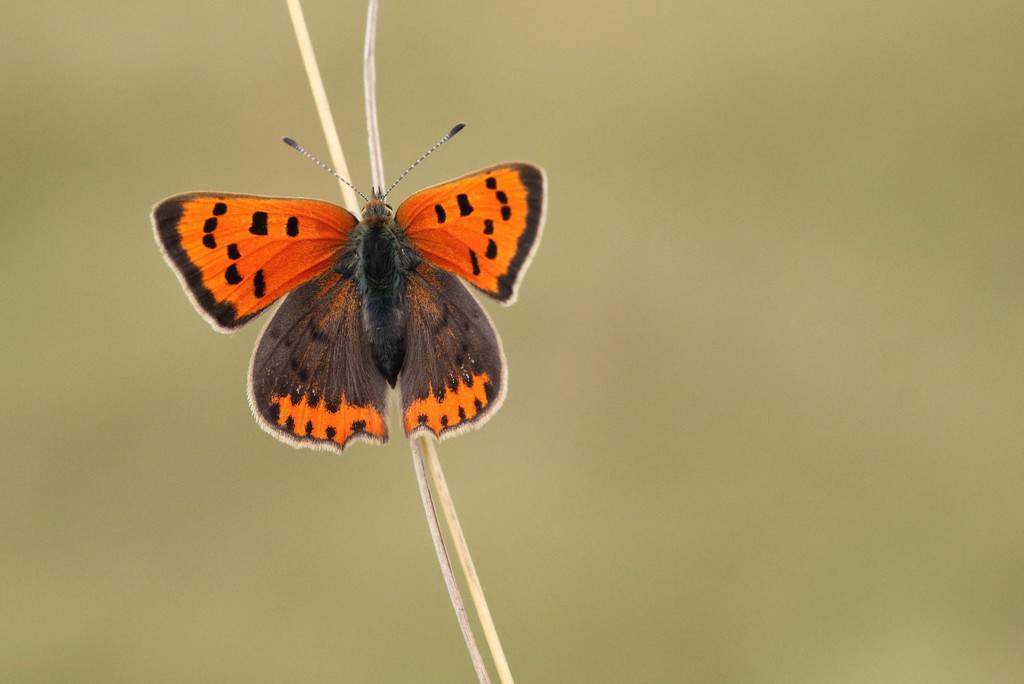History fans are being asked to take a closer look at castles this summer in a bid to track the changing fortunes of one of the UK’s most striking and overlooked butterflies.
The Small Copper is in long-term decline, with almost half of the UK’s population being lost over the last 40 years, but scientists are predicting this could be a bumper year for the butterfly, which thrives in particularly warm, dry summers.
As part of this year’s Big Butterfly Count, wildlife charity Butterfly Conservation is asking people to look out for the Small Copper and other grassland butterflies when they visit castles and their surrounding grounds.
The ancient meadows surrounding many of these sites provide much needed habitat for grassland butterflies and other Big Butterfly Count species.
Richard Fox, Butterfly Conservation Associate Director of Recording and Research, said: “The Small Copper has been struggling in recent years, declining by 46% across the UK since the mid-1970s.
“The butterfly did a bit better in the 2017 Count, so we’re keen to see how it has fared this year – especially as the Small Copper does really well in the type of warm, dry conditions that we’re experiencing right now. I’m hoping for a big improvement in the numbers seen this year.”
Other grassland species that can be seen as part of the Big Butterfly Count include the Meadow Brown, Ringlet and Common Blue.
The Meadow Brown – the UK’s most abundant butterfly – did well in 2017, recording its greatest numbers for over a decade.
The Ringlet had one of its best years too and continues a long-term trend of increasing abundance. In recent decades this butterfly has colonised many new areas across Scotland, Ireland and Wales.
The Common Blue – the most widespread blue butterfly across Scotland, Wales and Ireland – also bounced back from a horrendous 2016, to have an average year in 2017.
The Big Butterfly Count is the world’s largest butterfly survey, which encourages people to spot and record 17 species of common butterflies and two day-flying moths during three weeks of high summer, across the UK.
Results from the Big Butterfly Count will help track the ongoing spread of the UK’s butterflies and could shed more light onto the long-term effects of climate change and habitat loss.
Butterfly Conservation President, Sir David Attenborough, said: “The spectacle of a summer meadow brought to life by butterflies pottering amongst the wild flowers is one of the unexpected treats of the British countryside.
“The grasslands around our castles are fantastic places to take part in the Big Butterfly Count and they are great spots for species like the Small Copper, Meadow Brown and Common Blue.”
Richard Fox added: “Taking part in the Big Butterfly Count is not only good for our understanding and conservation of native butterflies, but for people too. Whether that’s taking 15 minutes out of a busy day to enjoy the beauty of butterflies, or engaging your children or grandchildren with nature.”
The Big Butterfly Count is sponsored by B&Q. Helena Feltham, People Director at B&Q, said: “We know B&Q customers love connecting with nature in their gardens, and garden wildlife and greenery is good for all of us, in so many different ways.
“Though gardens in the UK are changing, every outdoor space, no matter its size, can deliver benefits for wildlife. As part of our ongoing commitment to the nature of gardens, we’ll be encouraging B&Q colleagues and customers alike to get outside, connect with nature and spot as many butterflies as they can during the Big Butterfly Count.”
The Count runs until 12 August. Taking part in the Count is easy – find a sunny spot and spend 15 minutes counting the butterflies you see and then submit sightings online at www.bigbutterflycount.org or via the free Big Butterfly Count app.





